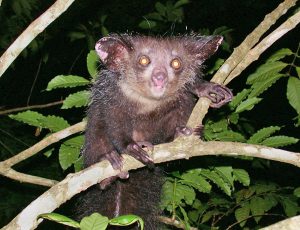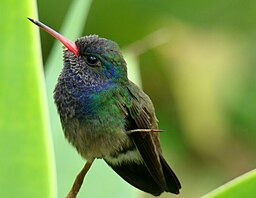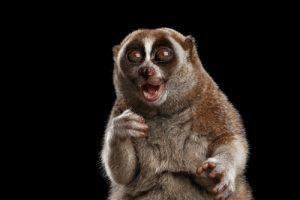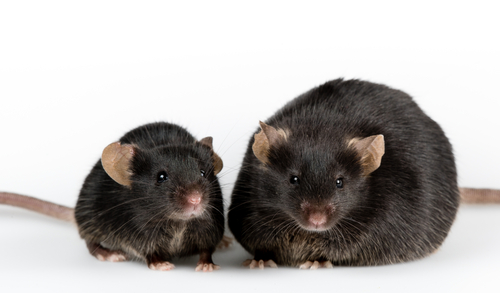
Did you know there are well over 2,200 extant species of rodents on our planet? Rodents make up around 40% of all the world’s mammal species and are to be found on every continent, except Antarctica. Scientifically, they are classified in the order of ‘Rodentia’, which is derived from a Latin word that means “to gnaw.” The common feature all rodents share is that their incisor teeth continuously grow throughout their lifetimes.
Many of us are quite familiar with some of the rodent family’s smaller members, i.e. mice, rats, gerbils, guinea pigs, etc., especially if we had them as childhood pets. Did you know mice are not only the most common family of rodents but they are also the smallest? For instance, the house mouse has an adult body length, including the tail, of only 75 to 100 mm (3–4 in), typically weighing 40–45g. So, do you know how their larger cousins size up? If not, here’s a brief overview of the world’s five largest rodents:
1. Capybara

Photo credit: Steph Mattioli/Shutterstock.com
The capybara is the world’s largest living rodent, with particularly large individuals weighing up to 90 kg. The giant semiaquatic member of the Caviidae family is native to most of South America. The only other extant member of its genus (Hydrochoerus), is the lesser capybara. However, both the guinea pig and the rock cavy are considered close relatives. The capybara typically inhabits savannas and dense forests, where bodies of water exist. A highly social animal, it is usually found in groups of between 10–20, but numbers may swell to as many as 100, particularly in the dry season. Though the capybara is widely hunted for its meat and hide, it is not currently not listed as a threatened species.
2. North American Beaver
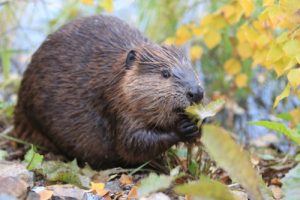
Photo credit: Frank Fichtmueller/Shutterstock.com
The North American beaver, along with the Eurasian beaver, is one of the only two extant species of beaver. A native of North America, it is also commonly known as both the “American beaver” and the “Canadian beaver”. The semiaquatic rodent can grow to a maximum of some 50 kg, though it typically weighs much less. Beavers live in family communities, ideally in areas with slow-flowing rivers or lakes, adjacent to woodland. They usually mate for life, breeding only once a year, typically producing litters of between 4 and 6 kits.
In the two centuries between the mid-17th and 19th-century, the North American beaver was hunted relentlessly for its fur and castoreum (musk), almost to the point of extinction. Their numbers have since recovered robustly, such that they are no longer a threatened species. During the 1940s, they were introduced to parts of South America and Finland. The former was in an attempt to establish a commercial fur trade, and the latter, as part of a rewilding programme. However, this was before the realisation that the Eurasian beaver was a separate species.
3. Lesser Capybara
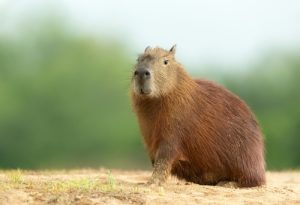
Photo credit: Giedriius/Shutterstock.com
The lesser capybara is a large semiaquatic rodent of the Caviidae family. The world’s third largest rodent is generally found in eastern Panama, northwest Colombia, and western Venezuela. Once categorised as a subspecies of the capybara, it is now widely recognised as a separate species. While it closely resembles the capybara, it weighs an absolute maximum of 45 kg, about half that of a large adult capybara.
The lesser capybara breeds all year round and produces an average litter size of 3-4 pups. The species may be diurnal or nocturnal and live solitary or in social groups, depending on the season and their habitat. The territory of this large rodent is now being very much threatened by subsistence hunting, the destruction of forests, and the drainage of swamps.
4. Eurasian Beaver
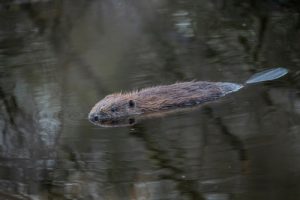
Photo credit: Paul A Carpenter/Shutterstock.com
The Eurasian beaver (aka European beaver), along with the North American beaver, is one of the only two species of the Castoridae family. Eurasian beavers weighing as much as 40 kg have been recorded but a maximum weight of 30 kg is by far the norm. In a similar story to that of the North American beaver, it was hunted to near extinction for both its fur and castoreum.
At the turn of the 20th century, there were only an estimated 1,200 Eurasian beavers left in the world, which were spread across a few remote locations in Europe and Asia. The Eurasian beaver has now been reintroduced to much of its former range, covering Spain, Central Europe, Great Britain, Scandinavia, and some areas of China and Mongolia. The world’s fourth largest rodent is currently listed as of “least concern” on the IUCN Red List.
5. Cape Porcupine
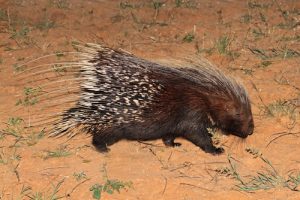
Photo credit: EcoPrint/Shutterstock.com
The Cape porcupine is also known as the Cape crested porcupine and the South African porcupine. The world’s fifth-largest species of rodent is native to Central and Southern Africa and can weigh in at as much as 30 kg. They exist in a wide range of habitats that can range in altitude from sea level up to 2,000 m. The nocturnal rodent prefers to inhabit rocky crevices and caves, but can also be found in dense forests and deserts.
The Old World species of porcupine typically give birth only once a year, producing between one and three young. However, more than 50% of the births are of a single porcupette. One of the world’s longest-living rodents, there are no current scientific estimates of their numbers. However, the Pine porcupine is considered to be fairly common and is consequently listed as of “least concern” by the IUCN.
Header image credit: Janson George/Shutterstock.com

